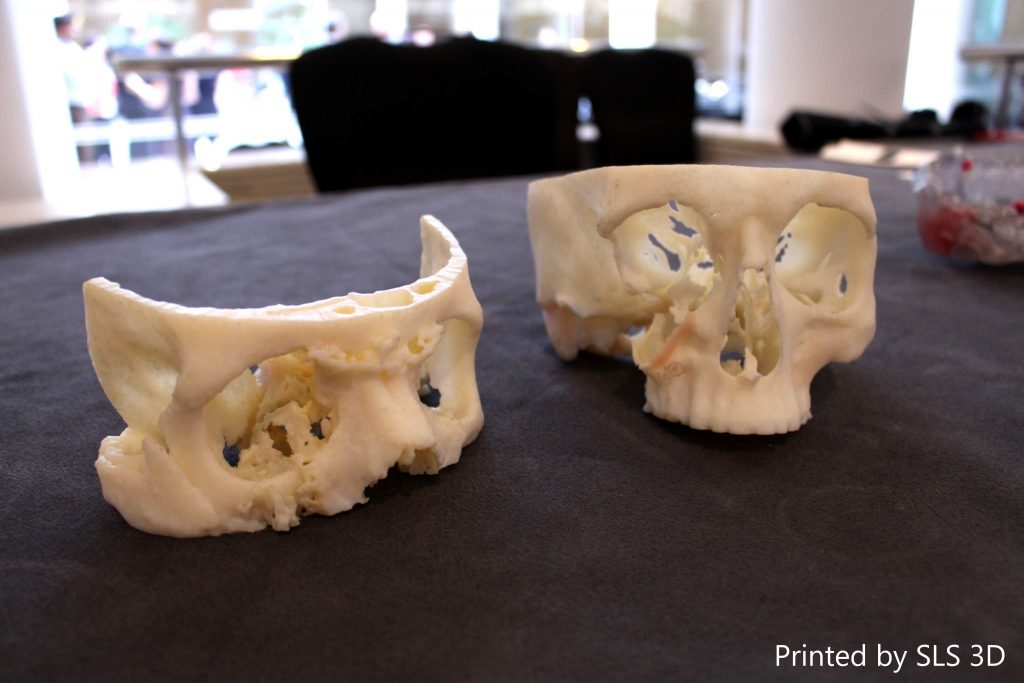3D printing is making leaps and bounds in its advancement, and through its journey forwards, it is taking many other technologies and applications forward along the way. One particular example would be the use of both 3D printing and 3D scanning in medicine. This has been happening for some years now through the use of MR and CT scans. Nowadays, development has progressed through the introduction of 3D scanning and an increased amount of 3D printing techniques. What used to be a product development tool, is now becoming a much bigger part of the medical industry.
“I want this patient’s skull in front of me”
This is a thought shared by many surgeons and doctors alike when faced with the prospect of a complex surgery on a face. Accurate models of internal body parts are amazingly useful tools for professionals and students as part of surgery planning, training and method development. In the early days of creating such models, they were milled in a milling machine from CT or MR scans, which was a somewhat lengthy process, and produced a lot of waste. This method of manufacture is being replaced with Additive Manufacturing, or 3D printing as we know it today, which is known for its ability to avoid waste, whilst being quicker in most cases.
3D printing technology isn’t just limited to just models either. Prostheses can be modelled from scans, colour matched using a Spectrophotometer and printed with only minimal cleaning once printed. This process of modelling based on scans allows for customisation of treatment. This is incredibly important, as every person is different, and very person has different needs and requirements. At this time many 3D printed prostheses are external due to guidelines and rules that prevent some materials being used internally for implants. In time, it is hoped that 3D printed implants can be used to encourage new tissue and cell growth whilst inside the body. Bio-cell printing may even one day do away with the need for animal testing, though it can be debated that this will never happen, even if one day organs and body parts can be printed.
Though 3D printing still faces a lot of development. However its current stages are already allowing customised treatment to be more available to patients due to its ability to keep costs low in most cases whilst still maintaining a high standard of quality.
Downsides
Some forms of 3D printing such as DLP or SLA to create a resin model have a higher cost in comparison to acrylic or PLA. The machines used to print also tend to have a high set up cost, which can make it hard for companies to afford them initially, despite the overall saving long-term. It can also take a fair amount of time and even money to integrate machines with existing systems and protocol for example in the NHS.
Computers are said to be more accurate than the human hand, however system errors and an inaccuracies can affect the ability to create models which are truly accurate. Tolerances will be improved as the technology advances, but the implications of possible errors will never disappear. The software used for scanning and printing in 3D often requires some form of training. The cost of hiring a trained operator, or training existing staff can be off-putting. However, there are programs currently being developed with the idea of making 3D modelling and printing more user friendly for surgeons and doctors who would otherwise find programs harder to understand.
There are many debates within this involvement of 3D printing in medicine such as, is it really worth it? There is a possibility of cheaper (in most cases), customised treatment for the masses. However this is at the cost of years of expensive research, and costly initial set up. The hope is that through development in many areas of medicine, 3D printing can one day be more accepted by more medical professionals and those who will potentially fund this technology.



